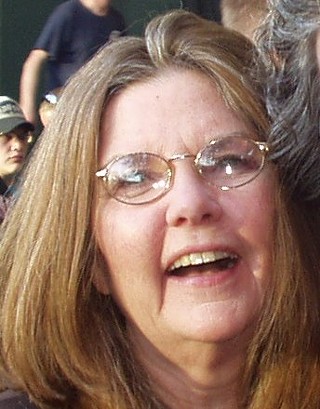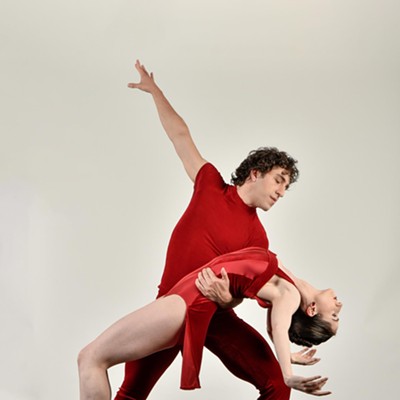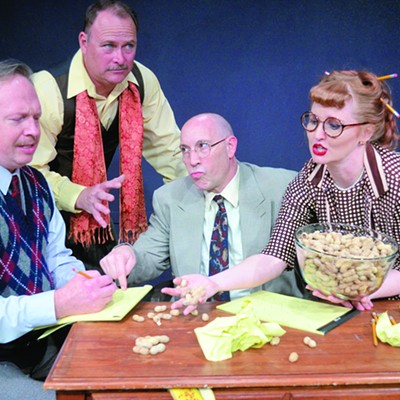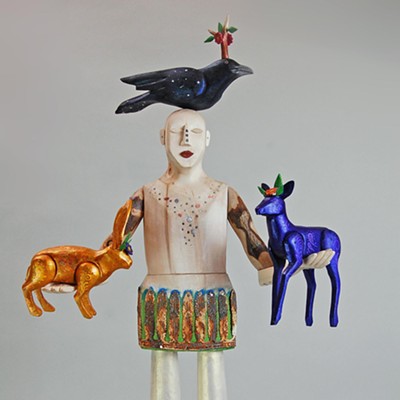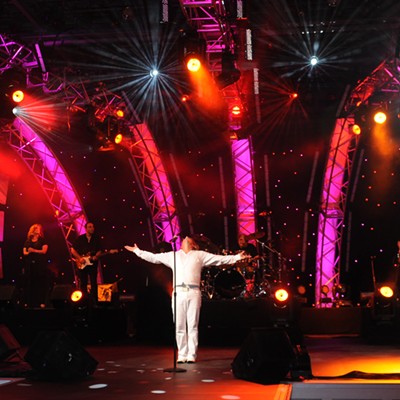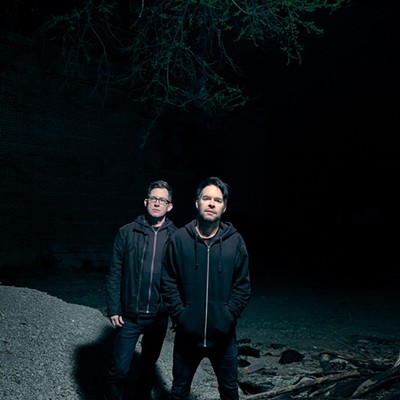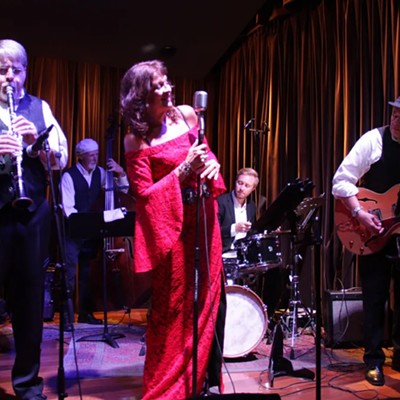Putumayo, it's not.
Toubab Krewe's music is no imperiled cultural treasure gentrified by slick production values geared to high-fidelity listening. You're meant to dance to Toubab Krewe—to laugh, clap your hands and feel like part of a community, however ephemeral.
In that way, Toubab Krewe may actually come closer to giving us a sense of West African music than any Putumayo production. In fact, you could say they're the real deal, were it not for what some ethnology snobs might consider a cultural-appropriation problem: The band hails from Asheville, N.C.
For Toubab Krewe, that's actually perfectly consistent with what they've learned in their many and lengthy stays in Mali, Guinea and Ivory Coast. Far from performing museum-quality reproductions, musicians there keep tradition dynamic and alive by incorporating new instrumentation and influences from other cultures.
"I think we've been really fortunate, because we've gotten great feedback from, first and foremost, our teachers," says percussionist Luke Quaranta. "And if there's anyone who we feel really responsible to in terms of doing the music justice, the traditional and public domain aspect, I think it's our teachers. We feel part of a community of artists in West Africa who play traditional music and also push the envelope and take creative license with the traditional canon, the traditional repertoire of what's West African music."
Original member and guitarist Drew Heller was first inspired by a Guinea band he heard in junior high school. With his friends and school chums Justin Perkins and Teal Brown, he began playing in drum circles and studied West African percussion. The three started a popular drum-and-dance group in Asheville called Common Ground. Quaranta joined in 1998, having become enthralled with drum circles after graduating high school in New York.
"Our first teacher from West Africa was a guy who we met in New York," Quaranta says. "We've studied with him from about 1998 to the present."
As it happens, that teacher, Madou Dembele, and his brother Adama, had previously lived and taught in Tucson.
The four undertook their first study trip to Conakry, Guinea, in 1999, staying several weeks in the homes of teachers to whom Dembele referred them. "We got picked up at the airport," Quaranta says, "and the next morning, we were in for two hours of lessons a day, then going out to see music in different places on the street, going to see music at clubs."
Dembele was living in Ivory Coast when the band went back there in 2001. "We stayed with him for six weeks," Quaranta says. On that trip, the group also studied again in Guinea and met more teachers they revisited on trips in 2002 and 2004.
By 2004, Perkins already had acquired and learned two traditional West African instruments, the lute-like, 21-string kora, and the similar, seven- or eight-stringed kamel ngoni. According to Quaranta, though, it was the guitar that made the biggest impression on both Perkins and Heller during a four-month-long stay in Mali in 2004. For the first time, they were struck by the extensive use of both acoustic and electric guitars to interpret traditional music.
"It was extremely traditional music in a much more contemporary setting in clubs, in nightclubs and bars—this real heavy kind of almost rock with electric guitar, with a high-volume aesthetic," Quaranta says. "We don't necessarily get that in the States if you're listening to a kind of Putumayo, 'world music' genre. It's much more of a real thing."
Abandoning the Common Ground model, the four formed a new band in early 2005. They named it Toubab Krewe based on an inside joke. "Toubab" means "foreigner" or "non-African." They had been referring to themselves by that name in West Africa, and the musicians there found it amusing. (Quaranta says, though, that the name offends a lot of Peace Corps volunteers who sometimes live a year or more in a country before villagers trade "toubab" for their given names.)
"At that point, it was very natural to move to a drum set," Quaranta says, "and then our friend Dave Pransky picked up electric bass. When we started to write music, it was a real organic process of writing with traditional tunes, but with more of a rock kind of setup and feel to a lot of them. And that's when we felt better about what was happening, and we wanted to take it on the road and play wherever we could. The response has been just amazing."
Toubab Krewe put out its first studio album in 2006 and a live album in 2009. They've toured heavily behind them—including three previous stops at Plush—leaving little time for composing and recording.
"It was really important to us to take an extended time in the studio," Quaranta says. "We're really all multi-instrumentalists, but we really haven't integrated all the instruments that people play. So we took a six-week stint from Aug. 1 through Sept. 15, and we integrated acoustic 12-string guitar, acoustic bass, piano, organ, fiddle, congas—a lot of different textures and a lot of instruments. It really is a kind of growth for the band and branching out. It needs to be mixed, but we're excited about it."
The band also branched out geographically. Inspired by mariachi they went to see every week at an Asheville Mexican restaurant, they adapted a traditional Peruvian song called "Carnavalito." Quaranta says it's one of the reasons the band is excited to come to Tucson.
"We're looking forward to playing 'Carnavalito' in that part of the country," he says.

